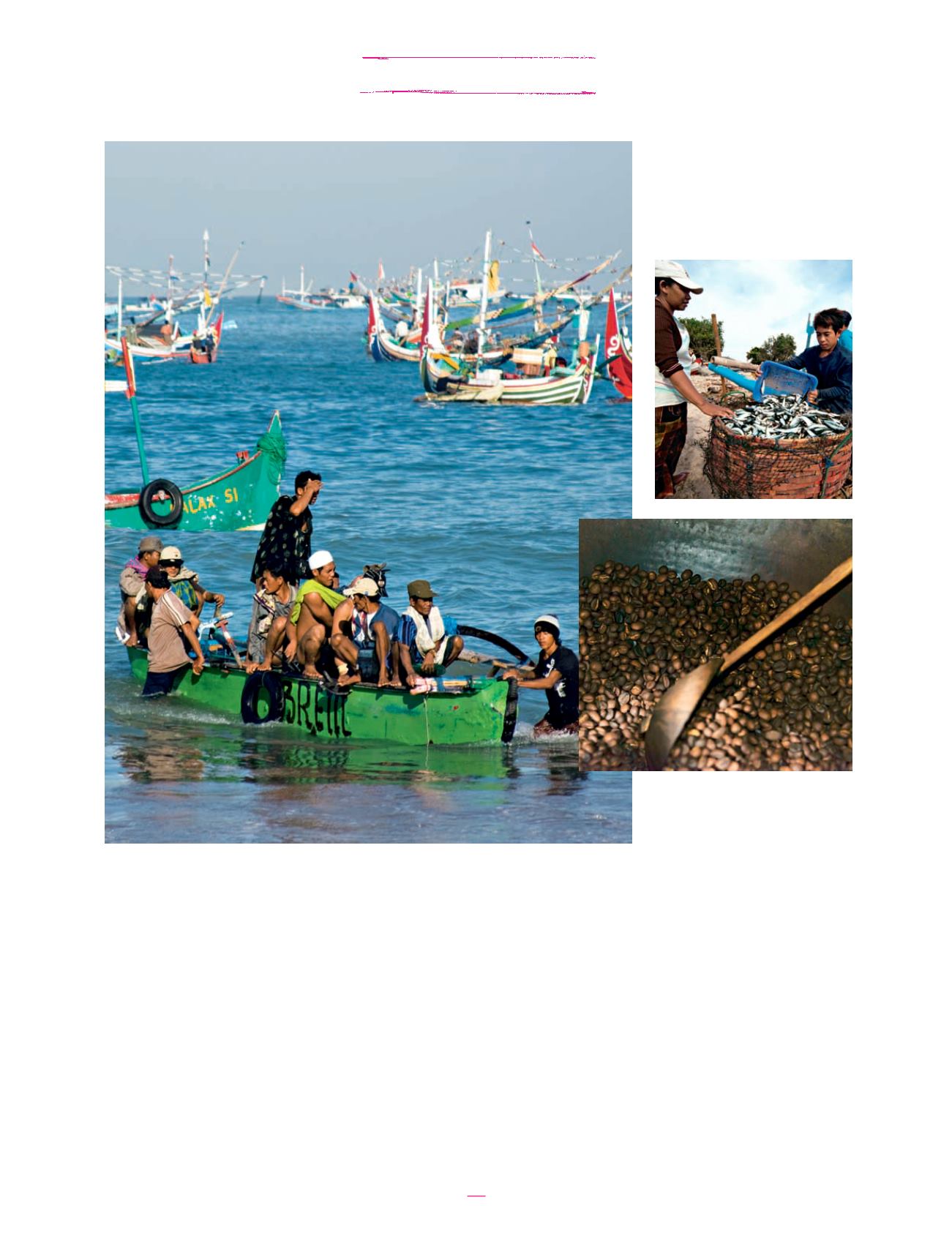
115
A different side of Bali
could have the sheer audacity
to pluck them from their casual
morning swim and onto dry land.
Farther into the market, there’s
ample opportunity to part with
your wallet-cluttering rupiah on
retail therapy with an even more
distinctively local flavor. The
dried fruit and herbs so prevalent
in Balinese cuisine dangle in
plastic bags at a number of stalls;
the island’s infamously hard-
hitting coffee is readily available,
including the
kopi luwak
, or
civet-cat coffee, that’s beloved
of curiosity-seeking caffeine
addicts (and equally loathed by
animal-rights campaigners);
while at another stall, a young
lady assembles leaves, tobacco
and flowers, and arranges them
into immaculate
canang sari
,
the palm-leaf basket offerings
of gratitude that adorn temples,
outdoor shrines and households
throughout the island.
All told, despite the arrival of a
raft of big-name hotels here since
the 1990s —Ayana (formerly the
Rit
z
-Carlton), InterContinental,
Four Seasons and, recently, Le
Méridien — Jimbaran has in fact
made its homespun charm and
traditional life its selling point.
I pulled into a courtyard for
an ATM stop and instantly
struck up a conversation with
five cheery teenage girls clad in
eye-catchingly bright
kebaya
(blouse),
kamen
(sarong) and
selendang
(cummerbund), who
wanted nothing more than to
knowmy name and country
of origin, and immediately
consented when I asked to
photograph them. It’s hard
to imagine such a relaxed,
spontaneous encounter taking
place in most South-East Asian
cities. Though fleeting and
inconsequential, the experience
remained in my mind for some
Clockwise from
above, left:
Fishermen and
fishing boats in
Jimbaran Bay;
fish for sale at
the Jimbaran
Traditional Fish
Market; civet-cat
coffee beans being
roasted
PHOTOS BY TOMMY SCHULTZ (JIMBARAN BAY); GETTY IMAGES (COFFEE BEANS)


